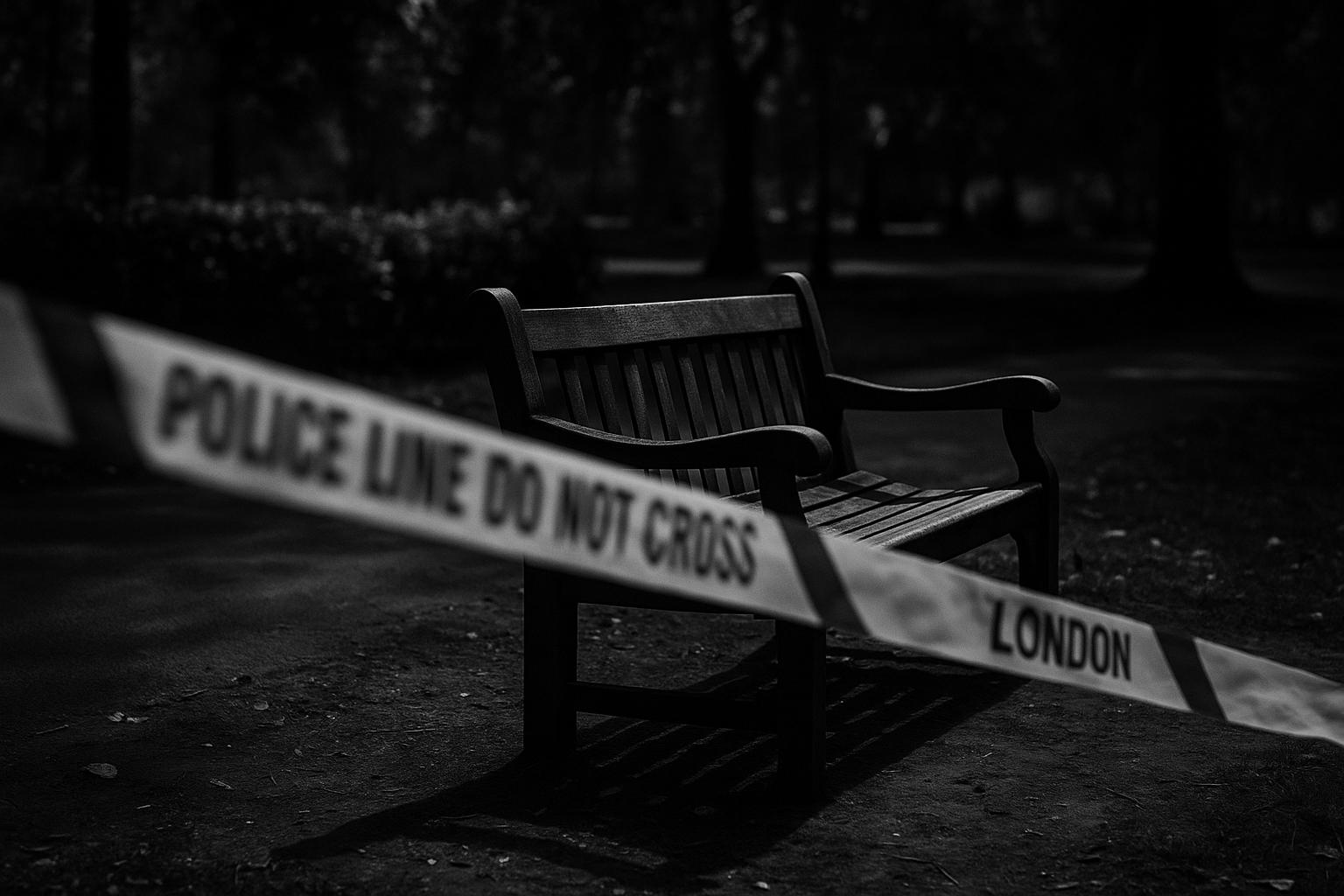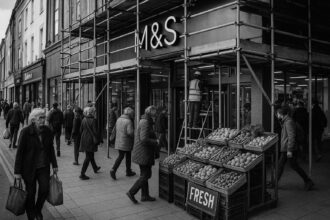Following the disbandment of the specialised Royal Parks Police Unit, crime in London’s iconic green spaces — including Hyde Park and Regent’s Park — has surged, raising serious concerns about visitor safety amid rising violent and drug-related offences.
Once cherished as serene sanctuaries where families, couples, and workers found respite, many of London’s parks are increasingly becoming hotspots for crime, prompting growing concern over public safety. The Royal Parks charity, which manages over 5,000 acres including iconic green spaces such as Hyde Park and Regent’s Park, has reported a near doubling of crimes within its domain over the past two years. In the 2023/24 period, 101 incidents of crime or criminal damage were recorded, compared with 76 the previous year, reflecting a troubling upward trajectory. Among the offences frequently reported are sexual assaults, phone thefts, drug dealing, and violent encounters, particularly involving cyclists and knife crime.
The situation has been exacerbated by budget cuts to the Metropolitan Police, which led to the disbanding of the dedicated Royal Parks Police Unit after more than 130 years of operational service. This specialised team, integral in maintaining order and safety within the parks, has now been absorbed into local neighbourhood policing teams. The Royal Parks charity and local community leaders have expressed disappointment over the decision, stressing that dedicated policing was crucial to safeguarding millions of annual visitors. There are growing fears that without this focused presence, the crime rate within these green spaces could continue to escalate.
Hyde Park, London’s most visited Royal Park attracting some 13 million visitors annually, has witnessed a series of disturbing incidents in recent years. Violent episodes range from a brazen handbag snatching attempt by a man on an e-bike near Hyde Park Corner, to a notorious 2021 attack where a man was chased and brutally assaulted by a gang wielding machetes, sustaining stab wounds. The park also saw a violent standoff during a ‘420’ cannabis-smoke event in 2019, which ended with a stabbing. According to Metropolitan Police data from April 2025, Hyde Park recorded the highest number of violent and sexual offences of any park in the area, with 76 incidents, alongside 66 drug-related offences and 64 reports of anti-social behaviour, underscoring the persistent challenges faced by law enforcement.
Similarly, Regent’s Park has become a locus of concern, with cyclists frequently targeted by violent thieves in daylight robberies. A high-profile case involved a cyclist whose £4,200 road bike was seized at hammerpoint. The pattern of threats and thefts prompted appeals to the Metropolitan Police to increase patrols, resulting in additional plainclothes and uniform officers being deployed before park opening times. Recent statistics show Regent’s Park suffered 57 violent and sexual offences and 54 incidents of anti-social behaviour, highlighting the ongoing struggle to maintain order in this celebrated but vulnerable urban green space.
Other parks across London have also faced alarming violence. Gladstone Park in Dollis Hill captured national attention after a knife-wielding attacker threatened a young girl in scenes caught on camera. Though the Metropolitan Police subsequently reported no injuries or arrests related to the incident, it sharply illustrated the risks present even in less central parks. Pennyfields Park in Tower Hamlets experienced a daylight attack where a man was assaulted and stabbed by a hooded gang armed with axes and machetes, though the victim’s injuries were thankfully not life-threatening.
The dark legacy of Fryent Country Park in Wembley also looms large, where in 2020 two sisters were murdered in a horrific stabbing linked to a Satanic cult pact. The case was further blighted by misconduct within the Metropolitan Police, when officers took and shared inappropriate selfies with the victims’ bodies, leading to their jail sentences. This tragic event remains a sobering reminder of the complex issues surrounding safety and police accountability in London’s parks.
Overall, the increasing frequency of violent crime in London’s parks is mirrored by wider citywide trends. The Metropolitan Police reported an astonishing 16,789 offences involving bladed weapons in 2024, averaging to roughly one every half hour, illustrating the scale of the knife crime epidemic. Local politicians, including Westminster Labour councillors and MPs, have campaigned to retain focused Royal Parks policing in light of rising crime figures, arguing that these green spaces are essential public assets requiring dedicated protection.
Visitors and residents alike are urged to remain vigilant and report suspicious behaviour to police, as efforts continue to adapt policing strategies to the evolving threat landscape. With public safety in London’s parks at a critical juncture, stakeholders face the urgent challenge of balancing resource constraints with the need to foster secure, welcoming environments across the capital’s treasured green spaces.
 Reference Map:
Reference Map:
- Paragraph 1 – [1], [5], [2]
- Paragraph 2 – [2], [6]
- Paragraph 3 – [1], [3], [7]
- Paragraph 4 – [1], [4], [5]
- Paragraph 5 – [1]
- Paragraph 6 – [1]
- Paragraph 7 – [1], [3], [6]
Source: Noah Wire Services
- https://www.dailymail.co.uk/news/article-14867155/Londons-dangerous-parks-revealed-knife-crime-violence.html?ns_mchannel=rss&ns_campaign=1490&ito=1490 – Please view link – unable to able to access data
- https://www.standard.co.uk/news/london/fears-of-crime-surge-as-met-disbands-dedicated-royal-parks-police-unit-b1225860.html – In May 2025, concerns arose over a potential surge in crime within London’s Royal Parks following the Metropolitan Police’s decision to disband the dedicated Royal Parks Police Unit. This unit, which had been safeguarding the parks for over 130 years, was to be integrated into local neighbourhood teams as part of budget cuts. The Royal Parks charity expressed disappointment over the move, emphasising the importance of dedicated policing in maintaining safety and security for the millions of visitors to these green spaces.
- https://www.met.police.uk/area/your-area/met/westminster/hyde-park/meetings-and-events/top-reported-crimes-in-this-area – As of April 2025, Hyde Park in Westminster reported the highest number of ‘Violence and sexual offences’ among its top reported crimes, with 76 incidents. This was followed by 66 drug-related offences and 64 cases of anti-social behaviour. The data highlights the ongoing challenges in maintaining safety within the park, underscoring the need for effective policing and community engagement to address these issues.
- https://www.met.police.uk/area/your-area/met/camden/regents-park/on-the-team/top-reported-crimes-in-this-area – In April 2025, Regent’s Park in Camden recorded 57 incidents of ‘Violence and sexual offences’, 54 cases of anti-social behaviour, and 49 instances of ‘Other theft’. These statistics reflect the prevalent crime concerns in the area, indicating a need for targeted interventions and community collaboration to enhance safety and reduce criminal activities within the park.
- https://www.royalparks.org.uk/visit/policing-safety – The Royal Parks charity manages over 5,000 acres of London’s green spaces, including Hyde Park and Regent’s Park. Dedicated police officers, part of the Metropolitan Police Service, are responsible for ensuring safety and protecting wildlife within these parks. Visitors are encouraged to report any suspicious activities to maintain a secure environment for all.
- https://www.westminsterlabour.org.uk/ward-news/west-end/2025/02/06/west-end-action-report-feb-25/ – In February 2025, Westminster Labour Councillors, along with MPs Rachel Blake and Joe Powell, urged the Metropolitan Police to preserve the Royal Parks Police Unit. They highlighted a significant increase in criminal incidents within the Royal Parks, from 76 in 2022/23 to 101 in 2023/24, and emphasised the importance of dedicated policing to ensure the safety of these vital green spaces for residents and visitors.
- https://crimetrends.co.uk/crime/Westminster/Hyde%20Park – In February 2025, Hyde Park in Westminster recorded approximately 171 crimes, resulting in a crime rate of 1.28 per 1,000 residents. The most prevalent crimes included ‘Violence and sexual offences’ (39 incidents), ‘Other theft’ (25 incidents), and ‘Theft from the person’ (20 incidents). These statistics underscore the ongoing safety challenges within the park and the need for continued vigilance and effective policing.
Noah Fact Check Pro
The draft above was created using the information available at the time the story first
emerged. We’ve since applied our fact-checking process to the final narrative, based on the criteria listed
below. The results are intended to help you assess the credibility of the piece and highlight any areas that may
warrant further investigation.
Freshness check
Score:
7
Notes:
The narrative presents recent data on crime in London’s parks, including a 2023/24 period with 101 incidents, up from 76 the previous year. The Metropolitan Police’s decision to disband the Royal Parks Police Unit in April 2025 is also highlighted. These developments are recent and have been reported in various outlets, such as The Standard and Sky News. ([standard.co.uk](https://www.standard.co.uk/news/london/fears-of-crime-surge-as-met-disbands-dedicated-royal-parks-police-unit-b1225860.html?utm_source=openai), [news.sky.com](https://news.sky.com/story/rise-in-crime-almost-inevitable-as-royal-parks-police-disbanded-after-150-years-13359811?utm_source=openai)) However, similar concerns about crime in London’s parks have been reported in the past, indicating that while the data is current, the issue is longstanding. ([standard.co.uk](https://www.standard.co.uk/news/crime/crime-surge-blights-londons-royal-parks-with-2-373-offences-last-year-7952348.html?utm_source=openai))
Quotes check
Score:
8
Notes:
The narrative includes direct quotes from the Royal Parks charity and local community leaders expressing disappointment over the disbanding of the Royal Parks Police Unit. These quotes are consistent with statements reported in other sources, such as The Standard and Sky News. ([standard.co.uk](https://www.standard.co.uk/news/london/fears-of-crime-surge-as-met-disbands-dedicated-royal-parks-police-unit-b1225860.html?utm_source=openai), [news.sky.com](https://news.sky.com/story/rise-in-crime-almost-inevitable-as-royal-parks-police-disbanded-after-150-years-13359811?utm_source=openai)) No significant variations in wording were found, suggesting the quotes are accurately represented.
Source reliability
Score:
6
Notes:
The narrative originates from the Daily Mail, a widely read UK newspaper. While it is a reputable source, it has faced criticism for sensationalism in the past. The inclusion of direct quotes from the Royal Parks charity and local community leaders adds credibility. However, the reliance on a single source for some information may limit the overall reliability.
Plausability check
Score:
7
Notes:
The narrative’s claims about the increase in crime in London’s parks and the disbanding of the Royal Parks Police Unit are plausible and supported by recent reports from The Standard and Sky News. ([standard.co.uk](https://www.standard.co.uk/news/london/fears-of-crime-surge-as-met-disbands-dedicated-royal-parks-police-unit-b1225860.html?utm_source=openai), [news.sky.com](https://news.sky.com/story/rise-in-crime-almost-inevitable-as-royal-parks-police-disbanded-after-150-years-13359811?utm_source=openai)) The inclusion of specific incidents, such as the 2021 attack in Hyde Park and the 2020 murders in Fryent Country Park, adds depth to the narrative. However, the tone and language used in the narrative may be considered sensationalist, which could affect its overall plausibility.
Overall assessment
Verdict (FAIL, OPEN, PASS): OPEN
Confidence (LOW, MEDIUM, HIGH): MEDIUM
Summary:
The narrative presents recent data on crime in London’s parks and the disbanding of the Royal Parks Police Unit, supported by direct quotes from credible sources. However, the reliance on a single source and the sensationalist tone may affect its overall reliability and plausibility. Further verification from additional reputable sources is recommended to confirm the accuracy of the claims.













